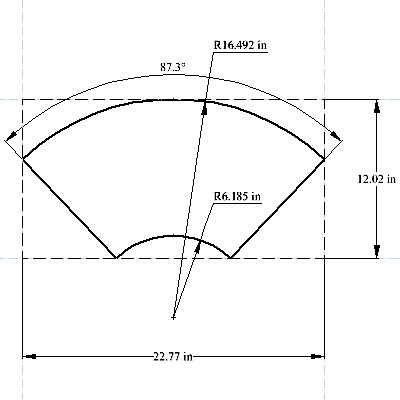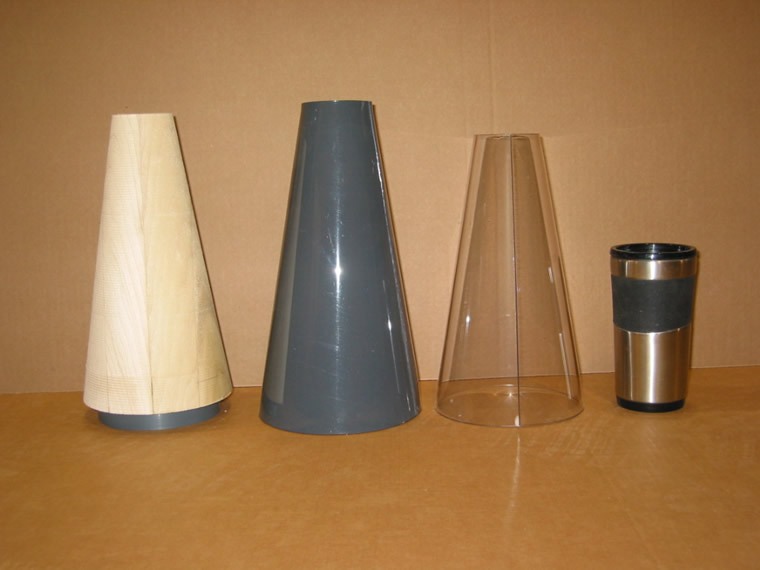How to Fabricate a Cone Cone Bottom Tanks
 To form a cone from thin flexible material, create a pattern and cut out the material from a flat sheet. You need any 3 pieces of information from the following 4 items to create the pattern:
To form a cone from thin flexible material, create a pattern and cut out the material from a flat sheet. You need any 3 pieces of information from the following 4 items to create the pattern:
- The large radius of the finished cone
- The small radius
- The height of the cone
- The angle of the slope

Cone Bottom Tanks
This worksheet can be used to calculate the inner radius the outer radius, and the angle of the arc to lay out the piece to be cut. The Cone Bottom Tanks work sheet also tells you the size of the rectangular piece you need to begin with. The dimensions are geometrically correct, but the plastic deforms in the heating process, so I normally make the inner radius 3 percent small and the outer radius 3 percent large. Use the suggested arc. Pull the two straight edges together, bond them, and you have made a cone. After the cone is bonded, it can be trimmed to the true dimensions required.
If the material is too stiff to bend unheated, you will need to soften it in an oven until edges can be brought together. The next step depends on the precision you require. For a crude cone, just heat the material until you can bend it and join the edges. If you want a truly round cone, create a master on which you can wrap the soft plastic. For Cone Bottom Tanks and small cones this can be made from a block of wood turned on a lathe. A secondary master may be used if you want to put the soft plastic inside the form. The advantage of this approach is that the edges of the workpiece naturally end up matching exactly. For larger cones the master can be made from thin plastic sheet material such as polypro or from sheet metal which is kept round by inserting round plywood disks inside it.
Category: Cone Bottom Tanks



